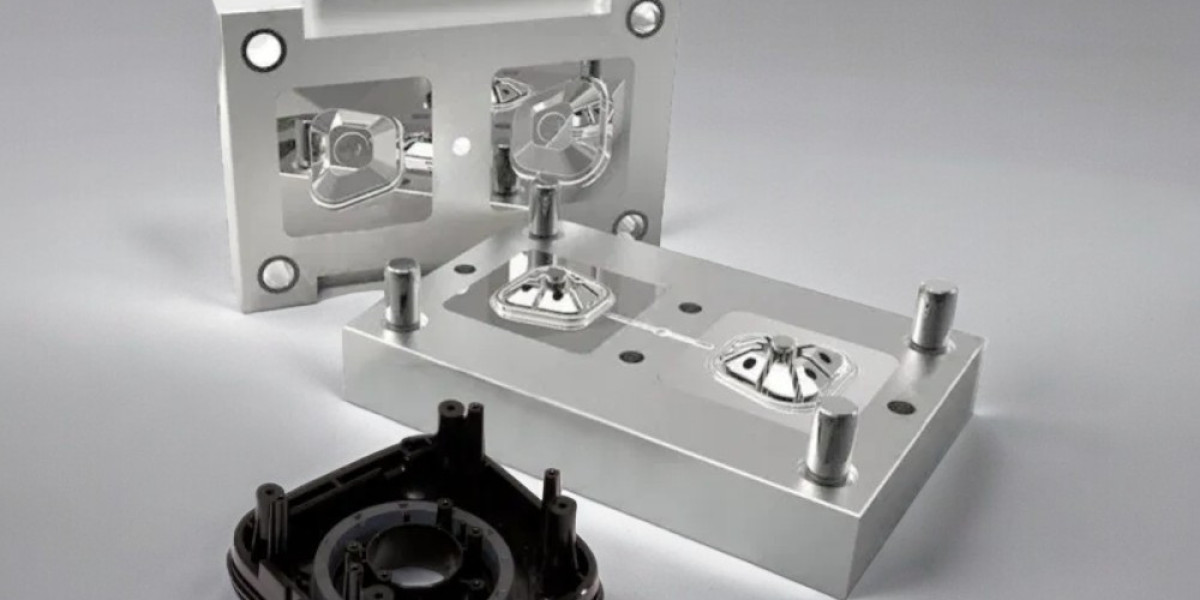Injection Molding Die Processing Guide: From Material Selection to Optimized Design
This comprehensive guide aims to assist mold engineers and injection molding operators in understanding the critical aspects of injection molding die processing, including material selection, surface treatment, and flow channel system design.
1. Material Selection and Protection
The choice of mold material directly impacts the lifespan, cost, and quality of the final product. For prototype molds or small-batch production, pre-hardened steel (such as P-20 or NAKR-55) and aluminum alloys are economical options that allow for easy modifications.
For high-volume production, hardened tool steel is essential to withstand greater pressure and wear. S-7 steel is known for its excellent overall performance, making it suitable for long-term use, while H-13 steel is favored for its high-temperature resistance in hot injection and hot runner systems. In environments that require high wear resistance or are prone to condensation, stainless steels like A2, ASP23, or D-2 are ideal.
To further enhance the mold's wear and corrosion resistance, various surface coating technologies can be employed. It’s important to note that mold repairs (such as welding) typically require the removal of coatings prior to repair and reapplication afterward.
2. Surface Finish of Molds
The surface finish of molded parts depends on both aesthetic and functional requirements. From SPI #1 mirror finishes to various textured surfaces, choosing the right mold surface treatment method can achieve the desired finish. Certain plastics exhibit better release performance in specific surface finishes; for instance, polypropylene has improved release characteristics in non-glossy molds compared to glossy ones.
3. Vent Design for Molds
Effective vent design is crucial for producing high-quality injection molded parts. Vents are typically located at the ends of the cavities, near weld lines, and within the flow channel system to release trapped air and gases during the injection process. The depth and size of vents depend on the type of plastic used; for high-viscosity amorphous thermoplastics, deeper vents may be necessary. Residual gases in the mold can cause burn marks on the part's surface, so matching the gas release rate with the plastic injection speed is essential.
4. Types of Molds: Single-Cavity vs. Multi-Cavity
Common types of injection molds include two-plate cold runner molds, three-plate cold runner molds, and hot runner molds. Two-plate molds have a simple structure and lower costs; three-plate molds can automatically separate the flow channel system. Hot runner molds eliminate runner waste and enhance material utilization, but they come at a higher cost.
5. Designing Hot Runner Systems
Hot runner systems can significantly reduce waste and improve production efficiency, but they require meticulous design and control. Selecting the appropriate hot runner manifold system, optimizing gate locations and sizes, and ensuring smooth melt flow are critical for the successful implementation of hot runner technology. For long glass fiber reinforced plastics, some gate residue is challenging to avoid. It is advisable to use a complete hot runner system from the same manufacturer to ensure compatibility and optimal performance.
6. Design of Injection Channels, Flow Channels, and Gates
The size of the injection channel sleeve should be slightly larger than the nozzle outlet diameter to prevent clogging. Flow channels should be as short and smooth as possible to minimize pressure loss. The design of the gate depends on the geometry of the part, wall thickness, and material properties. The size and position of the gate will affect filling speed, material flow, and cooling rates of the component.
7. Surface Enhancement Techniques for Molds
To improve the performance of molds, various surface enhancement techniques can be employed, such as nitriding, chroming, and coatings. The following table outlines common mold surface treatment methods and their pros and cons for reference by mold engineers.
| Treatment Method | Advantages | Disadvantages |
|---|---|---|
| Nitriding | High wear resistance | Higher cost |
| Chroming | Excellent corrosion resistance | May increase mold dimensions |
| Coatings | Reduces friction | Limited durability |
Through thoughtful material selection and design, coupled with effective surface treatment and vent design, the performance and production efficiency of injection molds can be significantly enhanced.







